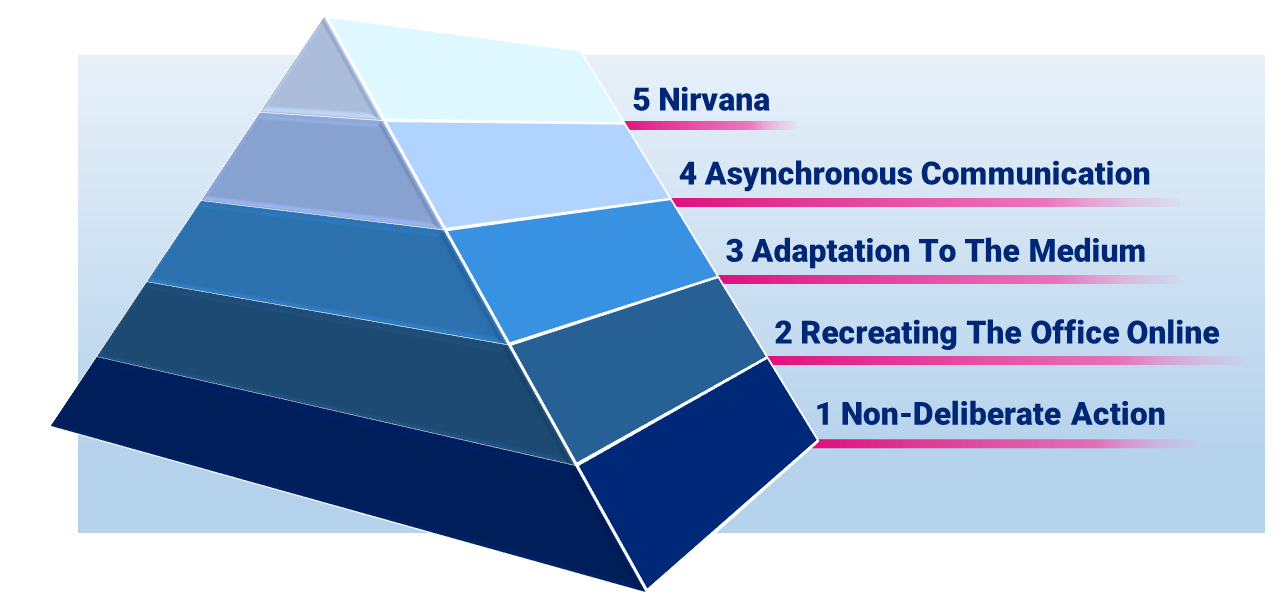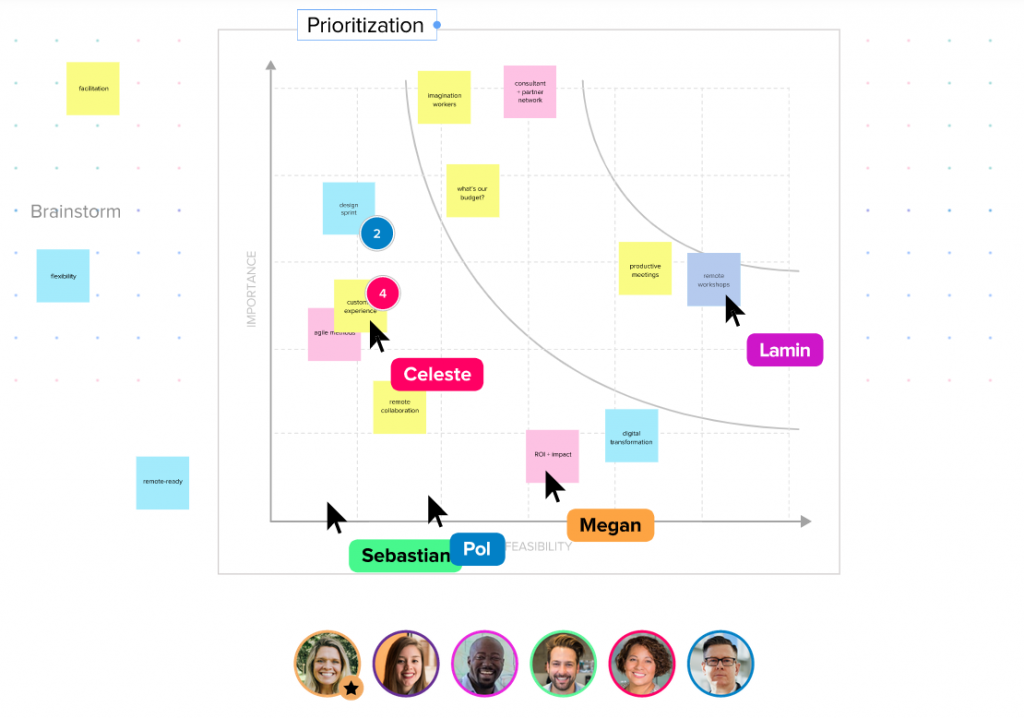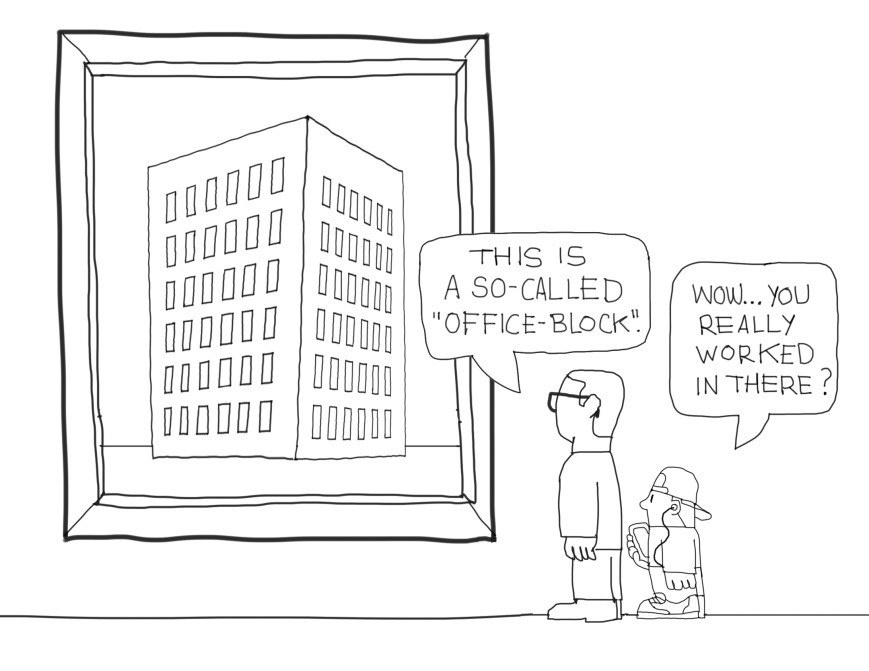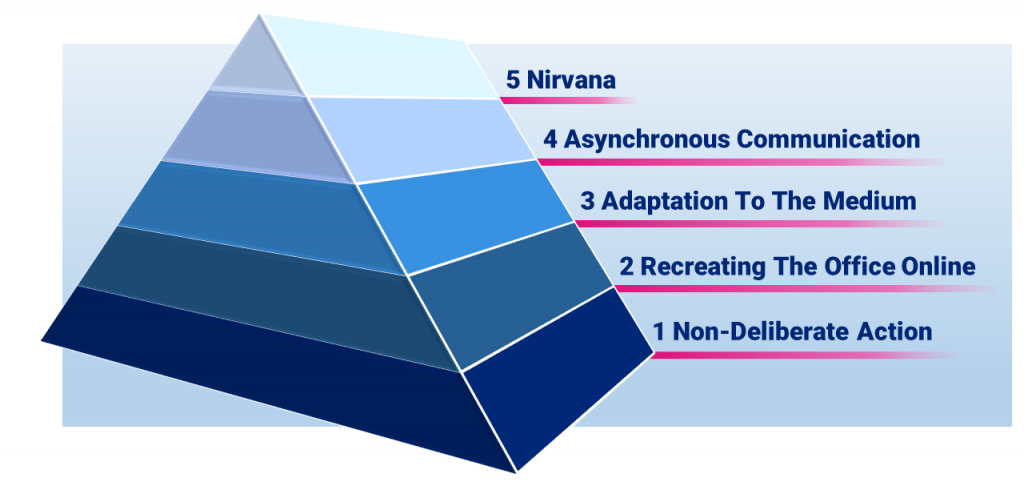Part of this text is an adaptation of a blog by Steve Glaveski on medium.com
At Nomadic IBP, we often advise clients to start from the positive characteristics of online learning and remote working, rather than seeing it as the second best alternative to being F2F. Since the start of the COVID crisis, most companies have been forced to deal with remote working, and to make the most of it. Obviously, some are better at this than others. Matt Mullenweg, founder of the company Automattic, has defined 5 levels of proficiency in remote working.
When it comes to swimming in the deep end of the remote working pool, few companies are doing it at a wider scale than Automattic — the company behind WordPress, which powers 35% of all websites on the internet. This company has 1,170 employees scattered across more 75 countries, speaking 93 languages. They do not have an office, with its employees collaborating almost exclusively online. Automattic’s founder, Mullenweg talks about ‘the five levels of distributed teams’.

The Five Levels of Distributed Teams
Level 1: Non-Deliberate Action
Nothing deliberate has been done by the company to support remote work, but employees can still keep their work going if they’re at home for a day. They have access to their smartphone, and email. Perhaps they dial in to a few meetings. But they’ll put off most things until they’re back in the office, and will be a shadow of their office-bound selves. Level 1 is where the overwhelming majority of organisations were prior to the COVID-19 outbreak.
Level 2: Recreating the Office Online
This is where most organisations are now, since the Covid crisis started. It’s where employees have access to videoconferencing software (e.g. Teams, WebEx, Zoom), instant messaging software (eg. Slack) and email, but instead of redesigning work to take advantage of the new medium, teams ultimately end up recreating online, how they work in the office. This extends to many of the bad habits that permeate the modern office. For instance, the sporadic checking of and responding to email more than 70 times a day throughout the day, or the hyper-responsiveness that is expected of all employees. At Level 2, people are still expected to be online from 9 to 5, and in some cases to be subject to what essentially amounts to spyware, with employers installing screen-logging software on their employee machines so that they can play the role of Big Brother.
Level 3: Adapting to the medium
At level 3, organisations start to adapt to and take advantage of the medium. At this stage, meetings tend to develop beyond simple information sharing (‘simple tasks’) into more complex teamwork, such as solving problems, creative work, developing strategy, creative work, learning together and conflict resolution (‘Complex tasks’).
Mural is an example of the tools that ease virtual collaboration.
Technology supports these complex tasks for instance by working in shared documents (such as a Google Docs or OneDrive), that are visible to all and updated in real-time during a discussion, so that there is a shared understanding of what is discussed and decided, eliminating the risk of conflicting copies and time wasted thereafter.
It’s at this stage that companies start to invest in better equipment for their employees as well, such as lighting for video-calls and background noise-cancelling microphones.
Level 4: Asynchronous Communication
I’ll get to it when it suits me.’ This is the nature of asynchronous communication.
The reality is that most things don’t require an immediate response. For most things, a one-way email or instant message should do the job, with the recipient responding when it suits them. If relationship building is important, then the mode of communication should reflect that. Pick up the phone, or tap that person (digitally) on the shoulder.
Also, a benefit of asynchronous communication is to give knowledge workers time to think, create and get into the flow state (a psychological state whereby we are up to five times more productive according to McKinsey).
Organisations that truly practice asynchronous communication have stepped out of the industrial revolution, and no longer conflate presence with productivity, or hours with output, as one might on the factory floor. Leaders of remote teams manage people based on trust and outcomes, rather than micromanagement and input (# of hours at work).

Home Office |
Image by Willian Iven from Pixabay
Mullenweg points out that globally distributed teams, who work asynchronously, and master ‘passing the baton’, can get three times more done than a local team relying on everybody to be in an office between 9am and 5pm. Since the start of the Covid crisis, clients from a variety of industries tell us they get more done since their teams work remotely, mainly from home.
Level 5: ‘Nirvana’
It’s hard to predict what the post-Covid organisation will look like, but I predict that managers and workers alike will be reluctant to give up the benefits of remote working that they have experienced during these exceptional times. Workers will be keen to keep the freedom to self-organise their work and to balance their work duties with their private life commitments. Organisations, having seen an increase in efficiency and a decrease in cost (such as office cost) will be tempted to stay on this track as well. The challenge for leaders will be to find the balance between creating a sense of belonging to the organisation on the one hand and giving knowledge workers trust and freedom on the other hand to perform their task. Organisational design, processes and technology should reflect this balance.
In either case, the classic office concept, may soon be something from the past.
When people do make the effort to come together in a building (office, co working space or restaurant), they will have a clear reason to do so. Often, this reason boils down to the basic human need for regular face to face interaction, more than a clear business need.
Below is a video showing Matt Mullenweg expressing his views about distributed workteams.





